Biceps Muscle Pain
What is a Biceps Muscle Pain?
Biceps muscle pain can manifest in a variety of ways, depending on the underlying cause. It is a common condition that can affect people of all activity levels. The biceps brachii, located at the front of the upper arm, plays a key role in arm movement, particularly in bending the elbow and rotating the forearm.
Pain in this area can result from overuse, acute injury, or underlying conditions such as inflammation or tears in the biceps tendon.
Understanding the causes, symptoms, and preventive measures is crucial for managing and alleviating discomfort effectively.
- Pain in the biceps may be caused by a muscular injury.
- Bicep pain may result from injury, overexertion, or trauma.
- However, discomfort may not just originate from a muscle injury; it can also develop in any area of the upper arm
- Since the muscle is used in numerous daily tasks, soreness of the biceps is a common condition. The biceps muscle may be sensitive or uncomfortable for many causes.
- This article also highlights the importance of physiotherapy and the therapeutic assessment of biceps muscle pain.
Let’s review the basics of the biceps muscle before getting into those areas.
Anatomy

- Arm muscles that are large and muscular are called biceps.
- biceps: the long head and short head
- The short head has the medial side attached & long head is attached to the lateral side
- The biceps brachii are capable of moving the radio-ulnar, glenohumeral, and elbow joints. Additionally, they are functional with three joints.
Origin and Insertion
- short head: coracoid process
- The long head: scapula’s supraglenoid tubercle
- Insertion: The bicipital aponeurosis, which extends into the forearm fascia, and the radial tuberosity of the radius are where both heads join.
Nerve Supply
The function of the Biceps Muscle
- Elbow Flexion: one strong flexor of the elbow joint is the biceps. In other words, it facilitates elbow bending.
- Forearm Supination: Additionally, the biceps are essential for forearm supination. This raises your palm.
- When lifting or lowering weights, it acts as a stabilizer, supporting the brachialis muscle, which is stronger.
- This function is important because it enables us to lift large weights when our arms are stretched downward.
- The roles of the biceps among other muscles are as follows:
- Elbow flexion movement is done by brachialis and brachioradialis.
Causes of Biceps Muscle Pain
- Pain at the front part of the arm, nearby shoulder, and elbow.
- Because the discomfort radiates to the back of the arm.
Bicep muscle strains
- Tendon tears may result from sudden force or from prolonged overuse.
- Jerky rotational movement of the elbow or shoulder around the shoulder is often the source of the tearing.
- Overuse of the elbow muscle is a major cause of tears in this area.
muscle damage can be partial or full.
three grades based on damage.
- Grade 1: Minimal muscular damage.
- Grade 2: A little damaged muscle. It occurs when the tendons or muscles of the biceps are torn, which impairs movement and strength.
- Grade 3: full muscle tear.
- Bicep pain is caused by lifting heavy objects or participating in specific physical activities, such as sports.
- is frequently observed in athletes or sports professionals, such as softball or baseball players or swimmers.
Bicep bruise
- Skin discolorations or bruises may also be the cause of arm or bicep pain.
- It develops when acute trauma or an unexpected excess of force on the muscle causes micro-injuries to the blood vessels.
- When the blood leaks from the veins and becomes trapped between the muscle and fascia, it causes a bluish or reddish-purplish discoloration on the skin.
- An extreme force on the skin can cause this.
Humerus fracture
- When someone falls on an outstretched arm, they have indirect damage to the humerus bone.
- Additionally, it may occur if you strike it directly during a fall or auto accident.
Brachial plexus injury
- Depending on the extent and location of the damage, brachial plexus injuries can present with a range of symptoms.
- weakness, numbness, and arm pain.
Delayed Onset Muscle Soreness
- Overuse of the muscles can result in delayed onset muscular soreness or DOMS.
This typically occurs after beginning a new exercise regimen, after a prolonged period, or while doing too much at once. - The general public, performers, heavy or manual laborers, professional athletes, and other groups frequently experience delayed onset muscle soreness.
- Everyone has probably gone through it at least once in their lives.
- The reason it’s called delayed onset muscle soreness is because the symptoms usually appear 6–24 hours after an exercise and persist for at least 48 hours.
Symptoms
Tendinitis in the Biceps
- shoulder pain in the front worsens as you lift or perform overhead exercises.
- soreness around the shoulder blades.
- It might harm the upper arm.
- A snapping or cracking sensation in the shoulder.
Biceps Torr or Tear
severe elbow or shoulder discomfort that frequently sounds like popping.
Upper arm bruising and swelling.
The arm is weak.
upper arm bulge caused by the muscle separating from the bone.
Other Reasons
Muscle strain: Pain and soreness in the biceps muscle, frequently given by an abrupt injury or excessive use.
Arthritis: Shoulder or elbow pain may result from arthritis, which is an inflammation of the joints.
The arm may become weak and painful if a nerve is compressed.
Upper arm bulge: As the muscle pulls away from the bone, a complete rupture of the biceps tendon may result.
Radiating pain down the arm: This may indicate a compression of the nerves, such as thoracic outlet syndrome or carpal tunnel syndrome.
discomfort that worsens with specific movements: Biceps tendinitis or a rotator cuff injury, for instance, may cause discomfort that gets worse when lifting above or reaching behind your back.
Hand or arm numbness or tingling: This may also indicate compressed nerves.
Diagnosis
During a physical examination, a doctor could check for bruises, lumps, edema, or flushed skin on the arm and shoulder.
The arm and shoulder may then be tested for strength and range of motion. The doctor may test the biceps muscle by performing various movements on the arm and shoulder.
A physician may prescribe further testing to get an accurate diagnosis, such as:
X-rays: X-rays create visuals of internal body components by utilizing electromagnetic radiation. They might help spot possible issues with the arm or shoulder bones.
Ultrasound scans: To create images of internal structures, medical professionals will employ probes that produce sound waves on the skin.
MRI scan: Radio frequency currents and magnets are used in an MRI scan
Physiotherapy Assessment for Biceps Pain
When a patient seeks physiotherapy for biceps discomfort, a thorough assessment is usually conducted to identify the underlying source of the pain and create a customized treatment plan. Typical elements of a physiotherapy assessment include the following:
Making a History:
Describe the pain: Where is it hurting? When did it begin? What improves or worsens it?
Medical history: Any previous injuries, diseases, or surgeries?
Level of activity: How frequently do you work out? and type of activity.
Occupation: What is your line of work, and how do you spend a day
Physical examination: Range of motion: Evaluating your elbow and shoulder joints’ flexibility.
Testing your strength involves determining how strong your biceps and other upper arm muscles are.
Palpation: Feeling the area for any unusualities, such as swelling or soreness.
Assessing your functional abilities by seeing how well you can lift, reach, and move overhead are examples of daily tasks.
Special Tests:
Speed’s test: To diagnose biceps tendinitis.
Yergason’s test: for biceps tendinitis.
Gait Analysis: A physical therapist may evaluate your walking pattern to find any compensatory or imbalanced movements if your biceps pain is influencing your posture or gait.
Immediate Management for Biceps Pain
If you suddenly develop pain in your biceps, you should act quickly to relieve the discomfort and avoid being hurt again.
It’s critical to get medical help if the pain is severe, continuing, or accompanied by additional symptoms like weakness or numbness.
At-Home Remedies
Heat Therapy: Using heat to relieve pain and relax muscles can help after the initial inflammation has decreased.
Stretching and Strengthening activities: Moderate activities might assist in regaining flexibility and strength when the discomfort has subsided.
Massage: Applying pressure to the afflicted area helps ease stress and enhance blood circulation.
Nutritional Points to Remember: Some people discover that cutting back on foods that cause inflammation, such as processed foods, sugary drinks, and too much red meat, can help with pain relief.
It’s important to remember that while some over-the-counter treatments could offer a brief respite, chronic or severe pain requires medical attention.
The brachial plexus injury that is causing the pain requires surgery, such as nerve grafts, nerve repairs, and nerve/muscle/tendon transfers.
The physical therapist will create a customized treatment plan based on the evaluation results, which can include:
Activity modification: Advice on how to change your routine in order to prevent making your discomfort worse.
Manual therapy: Methods to increase joint mobility and lessen pain, include massage, mobilization, and manipulation.
Exercise therapy involves strengthening the rotator cuff, biceps, and other shoulder muscles.
Therapeutic modalities: To lessen pain and inflammation, try using heat, cold, ultrasound, or electrical stimulation.
Tips for correcting your posture to lessen the strain on your biceps.
Exercises for bicep pain
Elbow flexion ROM:

You remain with your arm next to your body.
Place your opposite hand on your wrist or forearm and exert gentle pressure. Then, actively bend your elbow as far as it will go.
Releasing the strain by straightening your elbow after five to ten seconds of holding it bent.
Ten repetitions of the exercise are required.
Elbow Extension ROM
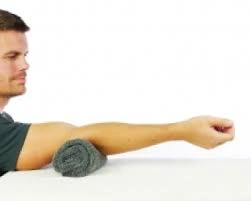
Place your elbow on a table and take a seat You might want to put a cushion or folded towel beneath your upper arm for comfort.
Extend your elbow fully, and then press into your wrist or forearm to further increase the stretch.
Hold the position for five to ten seconds after applying pressure to stretch your elbow as far as it will go.
Let go of the stretch and give your elbow a small bend.
Do ten repetitions of the workout.
Shoulder flexion with a cane
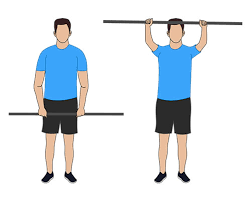
Shoulder flexion: • Raise both hands to grasp a stick or cane, then extend your elbows.
- Reach as high as you can.
Reverse the movement of your arms slowly.
Shoulder extension with a cane

Shoulder extension: Utilize both hands to grasp a cane or stick positioned behind you.
Raise both hands as high off your back as possible, then slowly lower your arms back down.
Dumbbells Shoulder Flexion
Start by keeping your arms by your sides. Without shrugging your shoulders, raise the dumbbells to shoulder height while maintaining a 90-degree arm bend. Perform ten repetitions in three sets.

Biceps curl
Position your feet approximately hip-width apart and tense your core while grasping medium-heavy dumbbells in front of your thighs. The palms must face up.
While bending your arms and tensing your biceps, pull the weights toward your shoulders.
Only raise the weight to your greatest height without moving your elbows.
Lower the weights gradually while bending your elbows slightly at the bottom (i.e., aim to maintain muscle tension and avoid locking your joints).
For 1-3 sets of 8–15 repetitions, repeat.
Barbell Bicep Curls
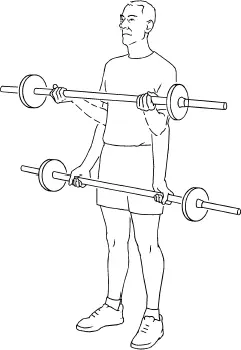
Place your feet shoulder-width apart and stand erect. Then, use your hands to hold the barbell underhand.
Use your core to curl the bar towards your chest while maintaining a high chest and back shoulders.
Feel the contraction in your biceps and hold it for about a minute.
Hammer curls

Hammer curls can be done bilaterally or unilaterally, with one arm being curled first, followed by the other, or by alternating repetitions.
Stretches for Bicep pain
Swing or rotate your arms

Take a position as shown in an image. To perform arm rotations, simultaneously move your arms in a vertical and circular motion.
Do a standing behind-the-back biceps stretch

This stretch requires nothing more than your body. Arms must be extended, and hands should be positioned at the lower part of the back. Reach as high as you can with your arms, and hold that position for a maximum of one minute, until you feel a stretch.
Stretch your biceps in a doorway
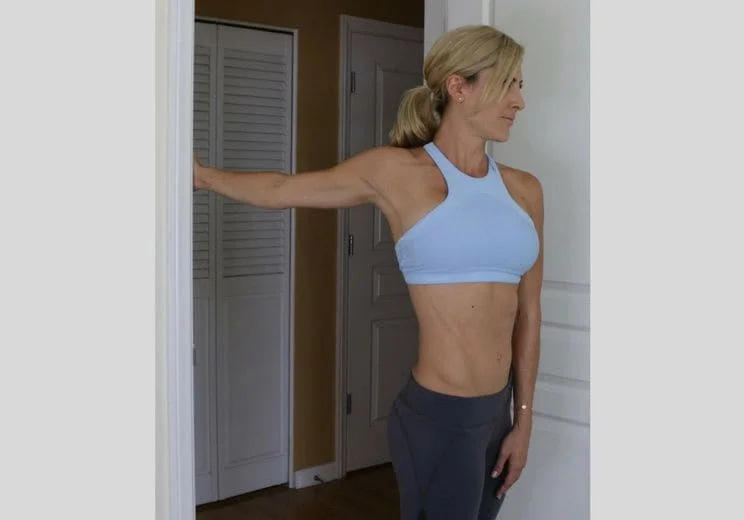
Your biceps will get a nice stretch from this exercise, which uses a door frame. With your back to the opening, take a position before any doorway. Extend your arm backward and press your exposed palm up against the inside border of the door frame on your biceps by pushing your hand on the door frame and moving your body away from the arm. hold: 10 sec
Seated biceps stretch

You can perform this extremely easy stretch anywhere. You should sit on the floor with your knees bent and your feet flat. With your arms extended and your fingertips directed backward, set your hands on the ground behind you and gently shift your bottom forward and away from your hands as soon as you sense your biceps lengthening. Hold the stretch for a complete minute.
Be careful not to overdo your stretching. Tears in muscles can result from overstretching. To ensure a satisfactory stretch, only extend your biceps as far as necessary. Stretches should only be pushed as far as comfortable to avoid hurting yourself.
Do a half-kneeling biceps stretch

Use a table or some other level surface. Face away from a level, raised surface, as a desk or table. Keeping your palms open and facing up, place the backs of your hands on the area behind you. Place yourself in a lunge or half-kneeling position, then hold the stretch for 30 seconds. Place one foot in front of you and bend down until your front leg’s thigh is straight out in front of you and your back leg’s knee touches the floor to make a half-kneeling lunge.
Squat down until your biceps feel stretched as an alternative to the half-kneeling stance.
How to prevent biceps muscle pain?
Here are a few practical ways to avoid it:
Warm-up: To prepare your muscles and improve blood flow, begin any workout with dynamic stretches and light aerobics.
Cool-down: To aid in the relaxation and recovery of your muscles, perform static stretches after your workout.
The Correct Form
To reduce bicep tension and avoid injuries, perform workouts correctly.
Slowly Increasing
Avoid quick weight or intensity increases. Increase your biceps’ workload gradually to avoid overuse issues.
Pay attention to your body.
Rest and The recovery process
Make sleep a priority because getting enough sleep is crucial for muscle healing and restoration.
Dietary intake
Drink plenty of water and Eat a range of foods to provide your body with the nutrients it needs to produce strong muscles.
FAQs
Do I need to be concerned about bicep pain?
While more serious injuries might need medical attention and physical therapy, milder ones typically heal independently.
How can I relieve my bicep pain?
Ice or cold compresses might help lessen pain and swelling. medications, Exercise
How can a pulled bicep be healed the quickest?
medication. The pain usually goes away on its own with time.
Ice. Several times a day, use cold packs for 20 minutes at a time to reduce swelling. Then, relax. Do not engage in overhead or heavy lifting exercises.
exercise. Your shoulder’s strength, mobility, and flexibility are restored.
How can I avoid pain in my biceps?
When lifting large things or increasing the number of repetitions, weight, or resistance, exercise takes extra care.
Increase your strength gradually.
References:
- Rd, R. a. M. (2022b, September 29). Biceps Tendinitis: What Is It and What to Do About It. Healthline. https://www.healthline.com/health/sports-injuries/bicep-tendonitis
- WebMD Editorial Contributor. (2023, March 10). Best Exercises for Biceps Tendonitis. WebMD. https://www.webmd.com/a-to-z-guides/best-exercises-biceps-tendonitis
- Whalen, J. (2024, June 14). 10 Ways to Stretch Your Biceps – wikiHow. wikiHow. https://www.wikihow.com/Stretch-Your-Biceps

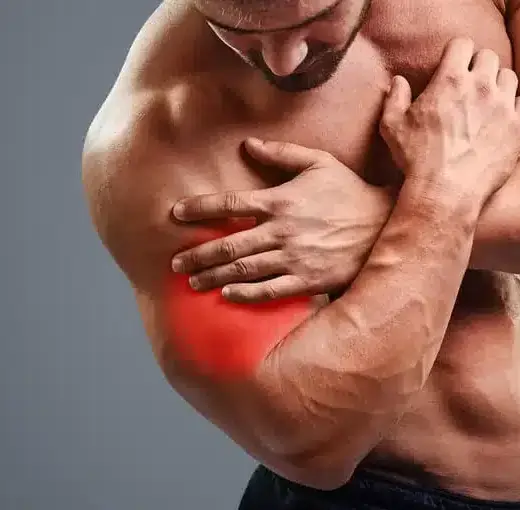

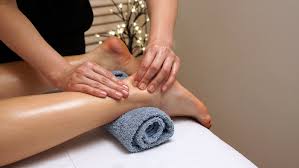



One Comment